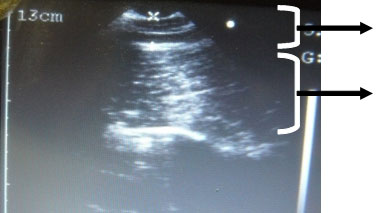This weight loss is generally composed of a maximum quantity of fatty tissue that is lost first followed by a loss of lean tissue. Upon having less fat reserves, the loss of protein mass is more frequent in sows nowadays. When feeding is handled correctly, weight loss during lactation should not be more than 10 kg (Noblet et al., 1990; Close and Cole, 2001) and should be totally regained throughout the following gestation.
In terms of the recuperation of reserves, it is true that protein reserves are harder to recuperate by way of feeding than fat reserves since the lean reserves are a “structural” part of the animals, above all in gilts. This can be the reason why some animals with a compromised body condition at the end of the lactation period, and, therefore, with an elevated loss of lean tissue, have a very difficult time recuperating in the following cycles. In this sense several studies indicate that current lean genotypes depend more on protein mass than on earlier genotypes in order to maintain reproductive function (Cia et al., 1998; Sinclair et al., 1998). Several years ago King (1987) suggested that an excessive mobilization of protein during lactation was more harmful to fertility than an excessive mobilization of fat. Subsequently, some authors have noted the importance of conserving muscle mass over the size of the next litter in gilts. Touchette et al., (1998) observed that losses of muscle mass during lactation of over 10% resulted in a decrease in numeric productivity in gilts in the second cycle. Also, Clowes et al. (2003a) have associated a marked reduction in ovary function and a reduction in lactation performance (milk production and liter growth) with a 12% or higher loss of protein mass.
In addition to the loss of lean tissue during lactation, we can also see that the level of lean reserves in farrowing is important in order to minimize post-weaning problems. In this sense, sows with higher levels of lean reserves at the time of farrowing, obtained by specialized diet during gestation (feed with higher levels of protein and lysine) presented better ovary function and performance during weaning than sows with lower levels of reserves (Clowes et al., 2003b). However, although the quantity of protein mass lost seems to be very important for the latter recuperation of the sow, maintaining a certain level of fat is still crucial to reproductive function. In this sense, Whittemore (1996) suggested that if the lipid: protein quotient in gilts was less than 1:1, reproductive function would be harmed.
Definitively, excessive weight loss during lactation has negative consequences on reproduction mediated, most likely, by the loss of fat and lean reserves and by the metabolic state generated for the animal. In this sense, recent studies (Cebrian et al., 2011) indicate that it’s possible that young sows nowadays are less sensitive to the loss of lean tissue if feed isn’t adequate (feed level, feed composition) (figure 1) and that we should consider formulating feeds with different levels of amino acids for young sows (higher levels), emphasizing recuperation periods like gestation.
_36631.gif)
Figure 1. Evolution of loin thickness during a productive cycle in multiparous and nuliparous sows.
In practice there aren’t any direct methods to measure lean reserves in the field. On an experimental level, generally, ultrasound machines are used to measure the loin thickness (LT) as an indicator of lean reserves (just as the dorsal fat measure, DFM, is taken as an indicator of fat reserves) (figure 2). However, in new lean genetics it has been proven that the body condition score (BCS) often used on a farm to evaluate the DF (r = 0,55) is also found to be related with the LT (r = 0,49) and live weight (r = 0,45) of the animal. That’s to say, that in addition to the level of fat reserves, the conformation of the animal is also measured (Cerisuelo et al., 2005). Therefore, indirectly, the visual method is the only practical method capable nowadays of evaluating lean reserves in the nucleus of breeders. In this sense, perhaps it would be convenient to adapt the measuring standards of the BCS, focusing up until no won the search for fat deposits, towards a score adhering more strictly to the conformation of the animal.
 |
Dorsal fat depth |
|
Loin thickness  |
|
Figure 2. Ultrasound image of dorsal fat measure and the thickness of the loin of a sow.


